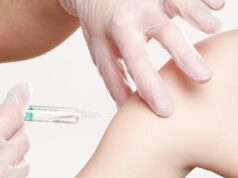
The use of mobile cardiac outpatient telemetry (MCOT) can help monitor COVID-19 patients taking hydroxychloroquine and azithromycin, while reducing potential exposure to the virus for clinicians and preserving personal protective equipment (PPE), according to a study published in the Journal of the American College of Cardiology (JACC).
David Chang (North Shore University Hospital, Manhasset, USA) and colleagues, used MCOT (BioTelemetry) to monitor 117 COVID-19 patients who were receiving hydroxychloroquine and azithromycin and were hospitalised on non-telemetry floors.
Patients received a baseline electrocardiogram (ECG) and twice daily QTc measurements. An electrophysiologist received telemetry reports twice per day and received an urgent alert within three to five minutes for any arrhythmia or QTc measurement >500 msec. MCOT was removed, sterilised and reused for patients who were discharged from the hospital or who had completed treatment with hydroxychloroquine and azithromycin.
According to the results, the average age of patients was 60.2 years and 40.5% were women. In addition, 52.1% of patients had hypertension, 28.2% had diabetes, 0.9% had heart failure and 5.1% had coronary artery disease. All patients received 400mg of hydroxychloroquine twice per day for one day, followed by 200 mg twice per day for four days. In addition, 51 patients (43.6%) received at least one 500 mg dose of intravenous azithromycin, and 40 patients (34.2%) received at least one other QT-prolonging medication.
In a total of 295 patient days, MCOT monitoring generated 28 urgent alerts for 18 patients (15.4%). The most common urgent alert was due to atrial fibrillation with rapid ventricular response, accounting for 15 urgent alerts (53.6%). QTc measurement >500 msec accounted for five urgent alerts (17.9%). Of the 28 urgent alerts, 12 did not warrant intervention.
The findings indicate that MCOT can be used to monitor arrhythmias and assess QTc when telemetry beds are not available, the researchers note, adding that an electrophysiologist received urgent alerts in “near real time”. However, they note that the limitations of MCOT include that the device was never approved to measure QTc for patients with AF or atrial flutter, QRS >160ms, and T-wave <5% of the peak QRS amplitude.
Although COVID-19 patients taking hydroxychloroquine and azithromycin may be at higher risk for drug-induced arrhythmias, none of the patients in the study had arrhythmias that led to medication changes, the researchers write. The use of MCOT enabled reduced exposure to COVID-19 for healthcare providers and preserved PPE, they conclude.








